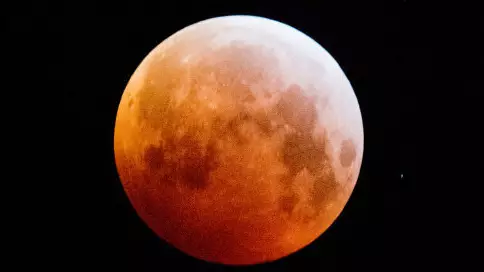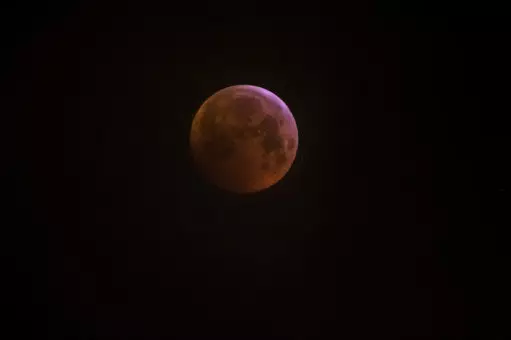
Early risers were treated to a spectacular sight this morning - the 'super blood wolf moon'.
Nope, that's not the latest instalment of The Twilight Saga, it is an actual moon - and a rare one at that.
Advert
The spectacle was caused by a total lunar eclipse, whereby the Earth sits directly between the Sun and the Moon. This subsequently prevents direct sunlight from hitting the Moon, resulting in it taking on the unusual bloody complexion.
As Walter Freeman, an assistant teaching professor at Syracuse University in New York state, explained to the BBC: "A little bit of sunlight is refracted by the Earth's atmosphere and reaches the Moon, bending around the edges of the Earth.
"This small amount of red light still illuminates the Moon enough for us to see it."

Why it is referred to as a blood moon is pretty obvious though; it's the super wolf-ness which is a little harder to decipher.
Advert
Well, super comes from the fact the moon is unusually close to us, making it appear bigger. Meanwhile, a full moon in January in Native American folklore is known as a 'wolf moon', so basically the wolf's been hijacked too to make the Moon sound like a badass.
The full eclipse began at about 4.40am in the UK, while mass coverage occurred between 5.12am and 5.43am. It was during this period the Moon appeared most bloody, as it was fully obscured from direct sunlight. By 6.51am the Moon had passed the Earth's main shadow and by 7.49am it had moved out of the outer shadow.

While some keen amateur astronomers and oblivious early risers alike took in the spectacle in areas of the UK this morning, many had it ruined or tainted by cloud cover.
Advert
Indeed, judging from pictures taken in the likes of Spain and Germany, it seems many in mainland Europe had a better view.

Though we shouldn't be ungrateful, as only those in north and west Europe were able to see it all.
If you missed it, hopefully you consider looking at all these pictures just as good, because the next total lunar eclipse isn't expected until 26 May 2021. Obviously, not being in January, it won't be as wolfy and badass either.
Featured Image Credit: PATopics: Science, UK News, Interesting, space